#Sikh Empire
Explore tagged Tumblr posts
Text
Maharani Jind Kaur
Maharani Jind Kaur, also known as Rani Jindan, was a significant figure in Sikh history, serving as the last queen of the Sikh Empire from 1843 to 1846. Born in 1817 in Gujranwala, she became the youngest wife of Maharaja Ranjit Singh, the founder of the Sikh Empire. After Ranjit Singh's death in 1839, Jind Kaur took on the role of regent for her son, Maharaja Duleep Singh. Jind Kaur's reign as regent was marked by political turmoil and conflict with the British East India Company. In 1845, during the First Anglo-Sikh War, she dispatched the Sikh Army to confront the British, leading to the annexation of the entire Punjab in 1849. After her son's dethronement, she faced imprisonment and exile by the British. Despite challenges, Jind Kaur escaped captivity in 1849, disguising herself as a slave girl and finding refuge in Nepal. Her efforts to resist British dominance continued through correspondence with rebels in Punjab and Jammu-Kashmir. She later reunited with her son in Calcutta in 1861, influencing him to return to Sikhism. Jind Kaur's exile took a toll on her health, and she passed away in her sleep on August 1, 1863, in Kensington, England. Denied the opportunity to be cremated in Punjab, her ashes were eventually brought back to India in 1924 and reburied in the Samadhi of Maharaja Ranjit Singh in Lahore. Despite her challenging life and exile, Maharani Jind Kaur's legacy endures as a symbol of resilience and resistance against colonial rule. In 2009, a memorial plaque was unveiled at the Kensal Green Dissenters Chapel, honouring her contributions to Sikh history.
#sikh empire#jind kaur#mahrani jind kaur#maharaja duleep singh#duleep singh#history#women in history#indian women in history#colonialism#british imperialism#indian royalty
15 notes
·
View notes
Text
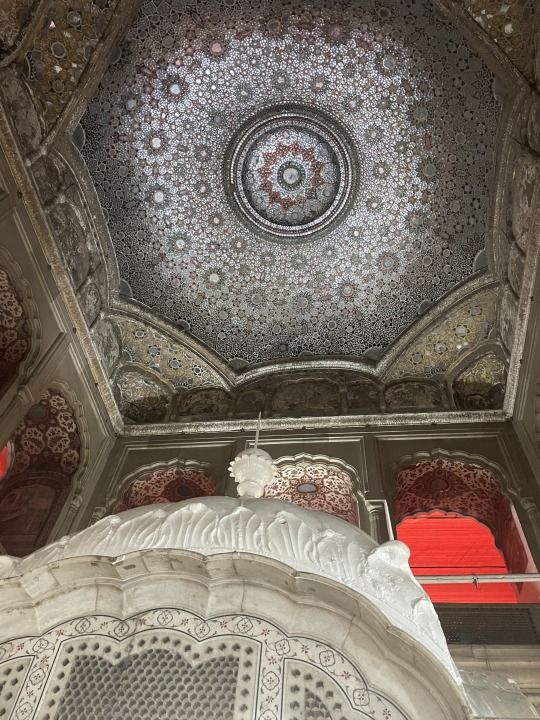
5 notes
·
View notes
Text

Who was Ranjit Singh? Why was he famous? Everything about Maharaja Ranjit Singh!
Ranjit Singh was the 1st Maharaja of the sovereign independent Sikh Kingdom of Punjab. He was born in 1780. In his childhood, he lost his left eye’s sight due to smallpox. He was also known as Sher-e-Punjab meaning Lion of Punjab. While he was a teenager, he along with his father fought many wars with the Afghans.
2 notes
·
View notes
Text
Fall of Sikh Empire
Welcome to our new video series examining the fascinating history of the fall of the Sikh Empire, also known as the Khalsa Raj, under the leadership of Maharaja Ranjit Singh (Sher - E - Panjab). In this series, we'll take a closer look at the factors that contributed to the decline and eventual dissolution of this once-great kingdom. Through a mix of stunning visuals and insightful vocals by Bhai Lakhwinder Singh Sohal Dhadi Jatha, we'll explore the key events and personalities that shaped this critical period in South Asian history. From the internal conflicts and political turmoil that weakened the Sikh empire from within, to the external pressures and military campaigns that eventually overpowered it from without, we'll delve into the many challenges that the Sikh people faced in the waning years of their empire. Join us as we uncover the legacy of Maharaja Ranjit Singh and the Khalsa Raj, and examine the lessons that can be learned from this pivotal chapter in South Asian history. Be sure to subscribe to our channel to stay up to date on the latest episodes, and don't forget to hit the like button and share with your friends. Let's explore the fall of the Sikh Empire together.
#Sikh#Khalsa#Khalsa Raj#Sikh Raj#Sikh Empire#Khalsa Empire#Khalistan#Punjab#Panjab#Lahore#Pakistan#Sher e punjab#Sher e Panjab#sikh raj kive gya#sikh raj kive gaya#Maharaja Ranjit Singh#The Black Prince#Kohinoor#Jind Kaur#Maharani Jind Kaur#Maharani Jind'an#Fall of the Sikh empire#Amritpal singh#amritpal#dibrugarh#singh#NSA#1947#1984#british rule
2 notes
·
View notes
Text

Maharajah Gulab Singh
0 notes
Text
Hari Singh Nalwa the sword arm of the Sikh Empire

In the annals of history, certain individuals stand out as symbols of unwavering courage, indomitable spirit, and unyielding devotion to their cause. Hari Singh Nalwa, a legendary figure in Sikh history, is one such luminary whose life and deeds continue to inspire generations. As the fearless commander of the Sikh Empire under Maharaja Ranjit Singh, Hari Singh Nalwa's legacy embodies the very essence of valor and leadership.
Early Life and Rise to Prominence
Born in 1791 to Gurdas Singh Sandhawalia, Hari Singh Nalwa entered a world that was witnessing the rise of the Sikh Empire. His upbringing was marked by martial training, a tradition deeply ingrained in Sikh culture. His prowess on the battlefield and leadership abilities were evident from an early age, setting the stage for his remarkable journey.
The Defender of the North-West Frontier
Hari Singh Nalwa's most celebrated achievements were his campaigns in the treacherous terrain of the North-West Frontier. Tasked with safeguarding the empire's borders, he emerged as an unmatched strategist and an epitome of bravery. He fortified the defenses of Jamrud, making it an impregnable fortress that thwarted repeated attempts by foreign forces to breach the empire's borders.
Legacy of Leadership and Honor
Beyond his military accomplishments, Hari Singh Nalwa was known for his statesmanship and commitment to justice. He treated conquered territories with respect, fostering a sense of unity and trust among diverse communities. His ability to bridge cultural differences and ensure harmony reflected his wisdom and compassion.
Cultural Patronage and Enduring Influence
Hari Singh Nalwa was not only a warrior but also a patron of the arts and culture. He encouraged the flourishing of Punjabi literature, music, and art, leaving a legacy that continues to enrich Sikh heritage. The town of Haripur in modern-day Pakistan, named after him, stands as a testament to his enduring influence.
A Hero Remembered
Hari Singh Nalwa's life was tragically cut short in 1837, but his legacy lives on as an embodiment of valor, leadership, and sacrifice. His contributions to the Sikh Empire's expansion and his relentless dedication to justice and honor remain etched in history. His name continues to evoke pride in the hearts of Sikhs and admiration from history enthusiasts worldwide.
Conclusion
Hari Singh Nalwa's legacy serves as a reminder that true leaders are not only defined by their military triumphs but also by their commitment to righteousness, cultural preservation, and a sense of duty to their people. His life exemplifies the essence of Sikh values, and his indomitable spirit continues to inspire those who seek courage in the face of adversity. Hari Singh Nalwa's name will forever resonate as a beacon of courage and as the embodiment of the very best that the Sikh tradition has to offer.
if you want to know deeply about him you should visit
this site..
0 notes
Text
Countries that are no more: Sikh Empire (1799-1849)
Though short lived, this empire was notable for a few reasons. First, it was the last major bastion of native rule on the Indian Subcontinent before a century of unchecked British rule which had already been gradually expanding over the preceding century. Secondly, it was diverse & tolerant in its ethnic and religious composition, not just in the general populace but more uniquely in its administration. Finally, it was notable for the religion of its leaders, perhaps the only time in history where Sikhs reigned atop an empire. This is the Sikh Empire.
Name: In English, the empire is known as the Sikh Empire. In Persian this was translated as Sarkār-i-Khālsa or the Khālasā Rāj in Punjabi. These languages were important administratively within the empire. Essentially to mean empire or kingdom of the Sikhs. Khalsa is a Punjabi term for the Sikh community more broadly and specifically means "pure" as in one professes to follow the Sikh faith and has undergone the Amrit ritual ceremony of initiation, specifically baptism.
Language: The Sikh Empire was notable for its many languages. Persian was its administrative language at court. Persian had been the language of diplomacy, administrative and the high arts from the Middle East to the Indian Subcontinent for centuries in part due to the spread of Islam to India. It was the court language of the greatest Islamic polity in the history of India, the Mughal Empire (1526-1857). Other languages which in the empire included Indo-Aryan languages such as Punjabi which was the dynastic native tongue of the ruling family and various Punjabi dialects which made up the lingua franca of the core territory of the empire. Kashmiri and Dogri were spoken in some parts as well, also Pashto (Pashtun) also known as Afghani. There were numerous others which also took place in its territory in modern India, Pakistan and Afghanistan.
Territory: At its peak, the empire held roughly 200,000 sq miles of territory. The territory was centered in the Punjab region of modern Northwestern India and Eastern Pakistan. It covered territory in the modern states of India, Pakistan, the Afghanistan & Pakistan border and even small parts of Western Tibet in modern China.
Symbols & Mottos: The motto of the empire was ਅਕਾਲ ਸਹਾਇ Akāl Sahāi which is Punjabi for "With God's Grace" and its anthem was ਦੇਗ ਤੇਗ ਫ਼ਤਿਹ Dēġ Tēġ Fatih Punjabi for "Victory to Charity and Arms." The also used a triangled flag called the Nishan Sahib. This flag was used by Sikhs prior to the 1799 establishment of the empire and continued to have use after its 1849 disestablishment. It is usually depicted as an orange inner field with a green outer field with golden trim and patterns both on the green outer field and orange inner field. There were also individual flags for various Sikh, Hindu and Muslim regiments within the army as well. The Muslim ones often sharing similarity with the modern Pakistan flag.
Religion: Sikhism was the dynastic religion and religion of roughly 6-12 percent of the overall population. 50-80 percent of the populace was Muslim and 10-40 percent Hindu. There were also smaller populations of Christians and Jews as well. Religious tolerance was practiced as a matter of policy throughout the empire. Sikhs certainly benefitted from a ruling dynasty that was of their community however with larger populations of Muslims and Hindus among their territory, policies of accommodation and tolerance were practiced to other faiths as well. Likewise Indian and European Christians could practice their faith and rise to important military and government positions and even some Jews featured in the military as well. Promotion within the military and government more broadly had less to do with religion, ethnicity or geographic origin than with merit and personal loyalty.
Currency: The currency of the empire was called Nanak Shahi Sikee, these were metal coins usually of silver composition.
Population: The population was estimated to be roughly 12 million people at its peak in in the late 1830s and early 1840s.
Government: The government could be characterized as a federal monarchy with a later adoption of elements of absolute monarchy. Its origins lie in the Sikh community which started in the Punjab region of the Indian Subcontinent. This region consists of modern Pakistan (mostly) and some of India (remaining portion). It spans the five major rivers west to east (Indus, Jhelum, Chenab, Ravi & Sutlej). Sikhism had its origins and greatest core in the Punjab region among Punjabis. Though it is a relatively young religion by comparison to Hinduism and Islam, elements of overlap and interaction with both of these older faiths have influenced it. Nonetheless, Sikhs faced alternating periods of tolerance and persecution throughout the Mughal Empire and many Sikhs hid in jungles near the Himalayan foothills as refuge from the Muslim Mughals and various local Hindu hill tribal chiefs who persecuted them.
In response to this persecution from their neighbors, Sikhs formed militias to protect their religion community, these militias were called jathas and in turn these formed into a larger Dal Khalsa (Sikh army) circa 1735-1738. in 1748 at Amritsar, India, the most holy city for Sikhs in 1748 these militias were reorganized into a misl which is an Arabic term for equal. These misls became known as the Sikh Confederacy or Misl period (1748-1799). There were twelve sovereign Sikh misls formed and later a Muslim ruled misl which created a federation or confederacy united by Sikhism to preserve and protect their religious faith. There was uneven strength between the misls and some tried to expand at the expense of others, but they still formed a common defense of their community and even held biannual legislative meetings in Amritsar to address matters of the community.
The Mughal Empire suffered major decline in the 18th century following the death of its emperor Aurangzeb in 1707. The combination of a ruined economy from expensive wars, decentralization of power and the expanse of the Hindu oriented Maratha Empire (1674-1818) from the Western Deccan Plateau all contributed to its decline and creation of a power vacuum in parts of India, including the Punjab. To make matters worse, Nader Shah, the Shah of Persia invaded the Mughal Empire in 1739 and sacked the Mughal capital at Delhi. The plundering of riches from the Mughal capital was so great that Persia experienced three years exempt from all internal taxes. In this context the already persecuted Sikhs sought greater mutual defense, though their political autonomy remained relative to their respective misl. Despite the occasion inter-fighting with each other. Other problems came from the Afghan Durrani Empire which grew in the wake of Nader Shah's passing in Iran. The Durrani Empire would expand into Northern India including the Punjab and make the Mughals their vassals especially after defeating the Maratha Empire in 1761 at the Third Battle of Panipat. The Afghans would battle the Sikh Misls many times which aimed to defend themselves in the power vacuum from the Mughal decline.
The founder of the Sikh Empire proper, who united all the thirteen misls was a man named Ranjit Singh (1780-1839) who was of Jat-Punjabi ethnic origin and specifically Jat Sikh ethnoreligious families. His father Maja Singh and grandfather Charat Singh were the founders and chiefs of the Sukerchakia Misl. Ranjit was afflicted with smallpox as a child and left him blind in his left eye and scarred on his body, features which were noted by observers from Europe later in life.
Ranjit's father died when he was 12 and he took over chiefdom of the Sukerchakia Misl which was among the five most power Sikh misls. Through marriage Ranjit had alliances with two of the other top five misls. The Kasur misl near the major city and traditional capital of the Punjab of Lahore was controlled by a Muslim who assisted the Afghans in their invasions of India. Ranjit Singh defeated an Afghan invasion in 1797 in battle. In 1798 another Afghan army was checked by Ranjit Singh through scorched earth tactics.
in 1799 Ranjit Singh took Lahore using a combined 50,000 strong army made from his misl and that of his mother-in-law. This was traditionally dated as the founding of the Sikh Empire as Lahore would serve as its capital but Ranjit Singh would be formally vested as the Maharaja (King) of the Punjab in 1801.
Ranjit Singh held many titles, but the principal ones were Maharaja of the Punjab and Sarkar Khalsaji (Head of the Khalsa) which showed his titular leader status over the Sikh army and other misls. His authority was both geographic in nature and communal-religious in nature (to a degree).
Ranjit Singh would rule and expand the Sikh Empire until his death in 1839. The empire would survive roughly a decade after his demise.
Ranjit Singh was tolerant towards background in his governance and believed in merit and loyalty above all else. He hired Sikhs, Muslims, Hindus and Christians into his military and civil administration. These could also be Indians and Europeans with some French, Italian, Spanish, Russian & German officers taking leadership within his military. Even a few American adventurers such as Josiah Harlan and Alexander Gardner found work within Ranjit Singh's empire. The former Harlan (born to Quakers in Pennsylvania) taking on a governorship and the latter Gardner who was said to be born to a Scottish or Irish (possibly Scots-Irish) fur trader in modern day Wisconsin and had travelled to Central Asia dressed in a turban decked in Scottish tartan pattern joined the Sikh Empire's military where he served as a colonel and commanded the artillery. Ranjit refrained from hiring British officers joining his ranks but still communicated with the British East India Company which was Britain's state sponsored corporation bent on controlling India for its geostrategic and economic benefits. He relented slightly after 1835 and hired some British into his ranks.
Ranjit was secular and tolerant in his rule overall but personally followed Sikhism, he restored Sikh Gurdwaras (temples) and also prayed with Hindus in their own temples and upheld the Hindu sacred protection of cows and prevented their slaughter under punishment by death. Likewise, he had standing orders that his army was never to loot or molest civilians especially when conquering new territory and to not destroy houses of worship. All discipline was to be strictly enforced under his order. Observers noted that Ranjit would increase the salary of those who didn't engage in corruption and slice the nose off of those who were said to misbehave or act corruptly in his administration of state affairs. The mutilation was not only physical discipline but a psychological scar to deter bad behavior and forever mark one as untrustworthy.
The above is the consensus of most accounts, there are some Muslim accounts from the mid-19th century which portray Ranjit's reign as despotic and biased towards Kashmiri Muslims. The overall picture is one of a complex individual but generally agreed upon to be tough and strict at times but also overall pragmatic and not willing to let religious or national background create a personal bias towards their utilization in his administration.
After Ranjit's death the rules of succession weren't clearly established and in quick succession his son, grandson and subsequently two other sons ruled in his wake with his son Duleep Singh reigning the longest from 1843-1849. Duleep would later live in exile in Europe following defeat his by the British.
Military: The Sikh Khalsa Army at its peak in 1839 was roughly 125,000 men strong and it had infantry, cavalry and artillery components. Its origins lied in the Sikh jathas of the late 17th and early 18th centuries which passed onto the Sikh Misl (Confederacy) period of the later 18th century. These were typically cavalry based and engaged in hit and run tactics against the Mughals, Maratha and Afghans. Later Ranjit would modernize the Sikh army along European principles utilizing European and American recruited officers and by purchasing and developing modern weapons.
The military were given performance standards for logistics of troop deployment, maneuver and marksmanship. Likewise, the army was divided into three segments of elite troops, regulars and irregulars. Each with its own infantry, cavalry and artillery component. Even European style medals and awards for merit could be issued, including the Order of Merit with Ranjit's portrait featured on the medal.
Ultimately, the empire's military was a synthesis of modern (19th century) Western organization, discipline and technology with the original Indian cavalry hit and tactics and methods of its Sikh jatha forebearers.
Its infantry composition was not just Western officers and Sikhs of the Punjab for originally Sikhs looked down upon the infantry and so Afghans, Dogras and Nepali Gurkhas among others filled the infantry ranks. In time Punjabi Sikhs joined its ranks too. It reached over 50,000 in strength.
The cavalry reached a strength of 10,000 strong and consisted of Sikhs mainly, given their traditional use of cavalry dating back to jatha and misl eras preceding the 19th century.
The artillery was made up of 5,000 gunners at its peak with heavy cannons pulled by elephants, medium cannon pulled by oxen, light cannon pulled by horses and some mixed guns pulled by camels.
The traditional enemies of the empire in war consisted of the Afghans who presented its greatest threat from the West, the Sikhs pushed the Afghans from the Punjab and pressed into Afghanistan itself before being checked at the border, this demarcated the empire's western limit.
Other enemies included the Kingdom of Nepal which the Sikhs defeated. The Sikh Empire and its vassal the Dogra Rajput also fought against the Chinese Qing Empire and its vassal Tibet which resulted into a military stalemate but saw brief occupation of parts of Western Tibet in the early 1840s.
Its terminal enemy was the British East India Company which would face and defeat the Sikh Empire in two wars (1845-1846 and 1848-1849). The second war would lead to the British annexation of the Punjab and formal cessation of the Sikh Empire.
Lifespan: The empire's origins date back to the 18th century formation of the Sikh Misls within the Punjab and its gradual union under Ranjit Singh. Formally dated to start his 1799 capture of Lahore. In 1801 Ranjit was formally coronated as Maharaja of the Punjab.
Over the next several decades the empire would expand in several directions with the gradual defeat of the Afghans and Marathas who warred in the vicinity of the Punjab.
1809 saw Ranjit Singh sign a treaty of friendship with the British East India Company (EIC). This treaty requested Sikh help against the French should they attack EIC possessions elsewhere in India. Also, the Sikhs were not to pursue conquest south of the Sutlej River which acted as a border between Sikh and British spheres of influence. In reality this bought Ranjit time to focus on expanding against the Afghans in Punjab and Kashmir.
The empire expanded well into the fall reaches beyond Kashmir and Jammu and gained vassals in the Ladakh region. Likewise, the Sikhs would go onto fight the Nepalese (Gurkhas) and check their advance towards Kashmir.
The empire's lifespan very much mirrored with its founder Ranjit Singh's. Ranjit Singh had unified the Sikh Misls of the Punjab through alliance and conquest, and he driven out the Afghan invaders and expanded the Sikh polity he created to vast territories with tributary states of its own. He also gained riches from conquest, meritorious tax collections and trade agreements. Financed religious temple constructions of various faiths and modernized the military. Yet while his empire was on the surface strong, it was to peak with his demise in 1839. His health had declined in the 1830s due to a stroke and alcoholism as noted by many observers. He was said to treat his chronic pain with alcohol and opium though conversely, he refused to eat beef or smoke and was somewhat health conscious. Ultimately it was said he died of a combination of stroke and his failing liver due to his excessive alcohol consumption. He was cremated and four of his Hindu wives are said to have committed sati (ritualistic devotional suicide of widows by casting oneself onto the husband's burning funeral pyre) in a final act of martial devotion to their departed spouse.
In Ranjit Singh's wake, his sons and grandsons found themselves competing for succession, their were deep internal divisions and who to support and in quick order a son, grandson and two more sons of Ranjit took control with the youngest son Duleep Singh taking "control" at age five in 1843 and he would nominally reign for six years. He had a regency under his mother Jind Kaur for the years of his rule.
Following Ranjit's death, the internal division over support of his successors along with the ruling elite of the army which saw itself as the true extension of state and religion was convinced to go to war with the British in 1845-46. The Sikh administrators were said by the British to undermine the plurality and tolerance under Ranjit Singh towards other religions pushing for a Sikh supremacy in all matters. In response, the British began building a military presence along the Sutlej River, viewed as a provocation by the Sikhs. The British stated it was defensive in nature given what they saw as increasing chaos in the Sikh Empire. However, the Sikhs contend it was intended as offensive in nature to goad the empire into war. Whatever the varied causes war began in late 1845 and concluded with British victory in 1846. The result was the partial subjugation of the Sikh Empire with some territory and monies being ceded to the British. Also, separately Kashmir would be sold the to the princely state of Jammu (under British sponsorship).
Tensions between both the Sikhs and British remained which culminated in a second war in 1848-49 and saw the Sikhs fight valiantly but once more defeated. In April 1849 at Lahore, the British annexed the Punjab up to the fortress of Peshawar, gateway to the Khyber Pass towards Afghanistan. The British East India Company turned the Sikh Empire into the Punjab and North-West Frontier Province regions in modern Pakistan and India.
The British were impressed with the military prowess of the Sikhs, in part due to the religious devotion of its troops and in part due to the modernization efforts of Ranjit Singh and his able commanders. The conquest of the Sikh Empire served as the removal of last major obstacle to British rule over the whole of India. Recognizing the prowess of Sikh troops, the British were quick to incorporate them into the British Indian Army. A role they would play from the 1850s including during the Indian Rebellion of 1857 until World War II and the eventual granting of independence to India and Pakistan.
Duleep Singh was brought up in exile in Europe following the British annexation of the Sikh Empire, his teenage years spent in Scotland. He would go onto have family there and the Crown Jewels of the UK now in possession of the British Royal Family would incorporate some of its jewels taken from the Sikh Empire's Duleep Singh. Queen Victoria received the Koh-i-noor diamond which is set in the Queen Mother's crown to this day. The diamond dates back to the Mughal Empire and changed hands with the Persian looting of Delhi to Nader Shah before ending up in the Durrani Empire of Afghanistan and then the Sikh Empire under Ranjit Singh and finally with the British as a gift to Queen Victoria as it was formally surrendered to the EIC and then gifted to the queen. The modern governments of India, Pakistan Afghanistan (including the Taliban) and Iran have all demanded its return to them respectively, a demand which Britain's government has rejected. In 2018, India's Supreme Court & the Archeological Survey of India supported Britain's legal claim, stating the Treaty of Lahore in 1849 secured it through voluntary surrender, stating it was neither stolen nor taken by force, so it remains with the British Crown despite ongoing controversy.
Though the Sikh Empire lasted only half a century for the reasons outlined above, it is a polity worthy of study. First and foremost, its historical place in India as the last major bastion of independent native resistance before total British rule has endeared it to some Indian and Pakistani nationalists and international anticolonial narratives. The British recognized through its occasional defeats in battle at the hands of the Sikhs that they were a force to be reckoned with. Both sides earned a begrudging martial respect for the other following the two wars they fought. The British were keen to utilize the Sikhs for their own military, for which they served over the next century in many campaigns worldwide. Outside from its place in narratives of native resistance to colonial rule and its well-founded military prowess. The empire is relatively unique for its synthesis of administrative help from both within India and the West. Much of this can be chalked up to Ranjit Singh's personally pragmatic and disciplined approach to governance. Quite simply put Ranjit Singh wanted what he thought were the most qualified leaders regardless of ethnic or cultural background. Their merit as modernizers and reformers coupled with personal loyalty were prized above religious or ethnic affinity. Finally, the Sikh Empire is noteworthy simply for being to date the only Sikh run imperial polity in world history. Though it was the successor of the Sikh Misls which had a unified common defense, these misls were essentially politically independent in their own right rather than a singular polity. The Sikh Empire is the only time in history that a ruling dynasty over a vast territorial expanse came from practitioners of that religion and it was supported by an army and administration centered around that faith as well.
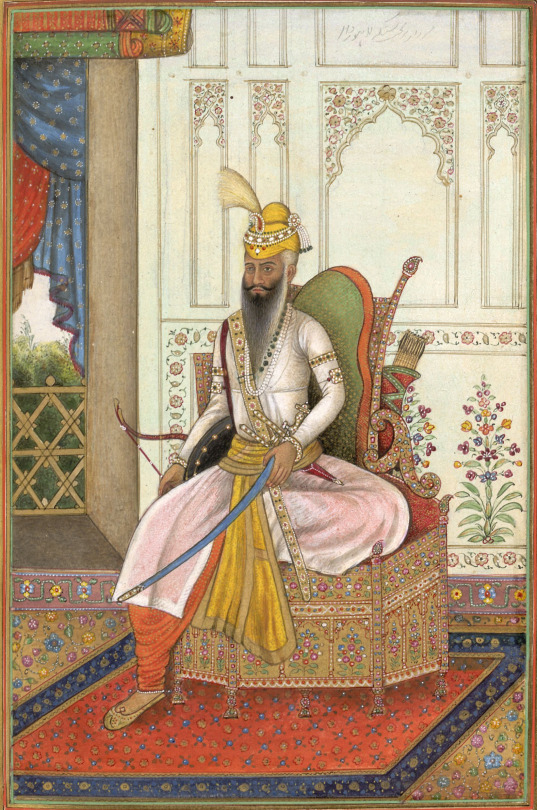

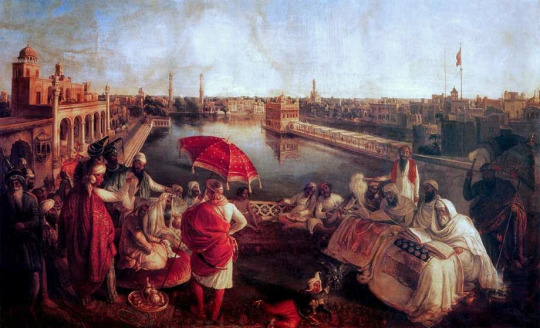

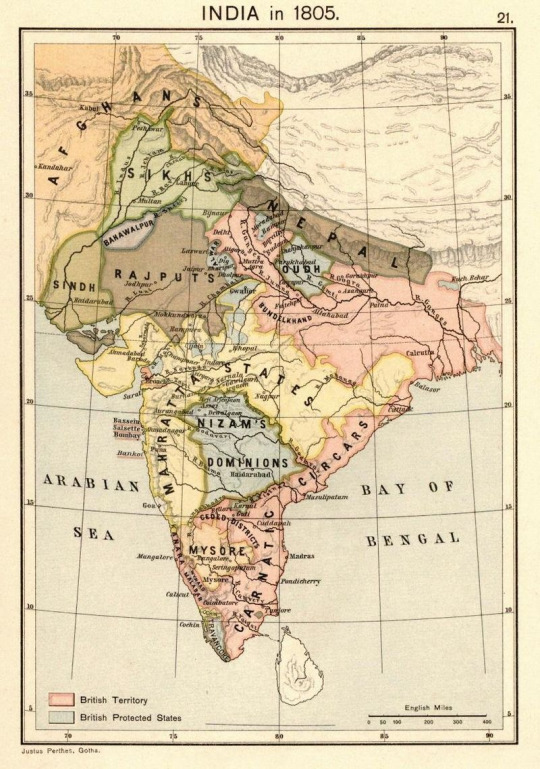
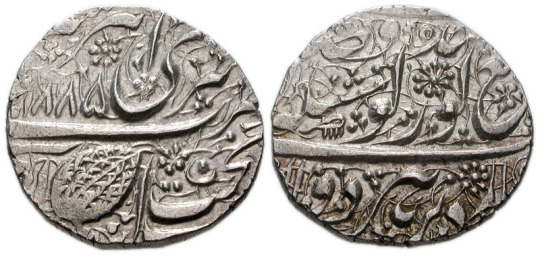
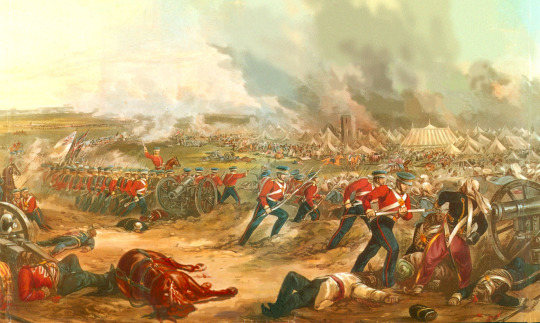
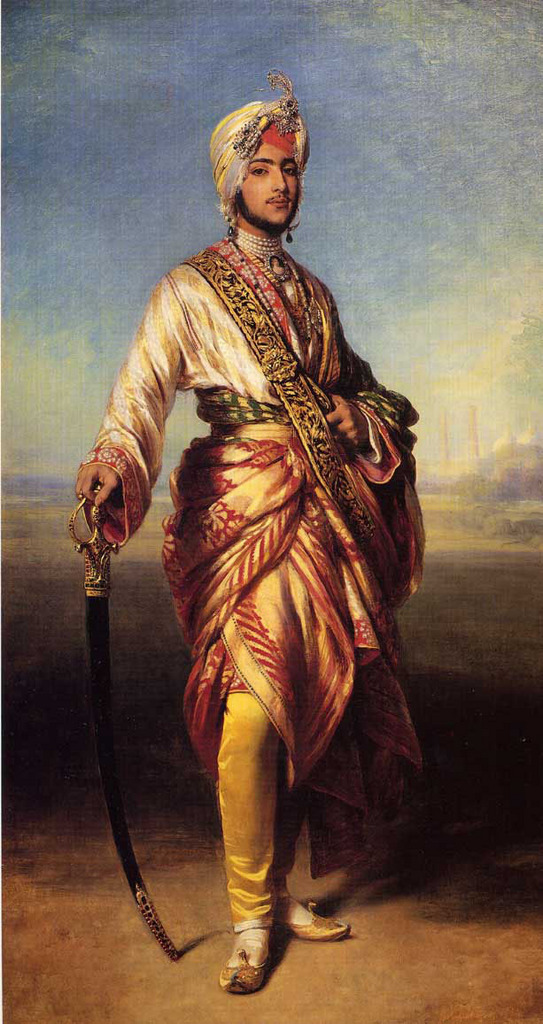
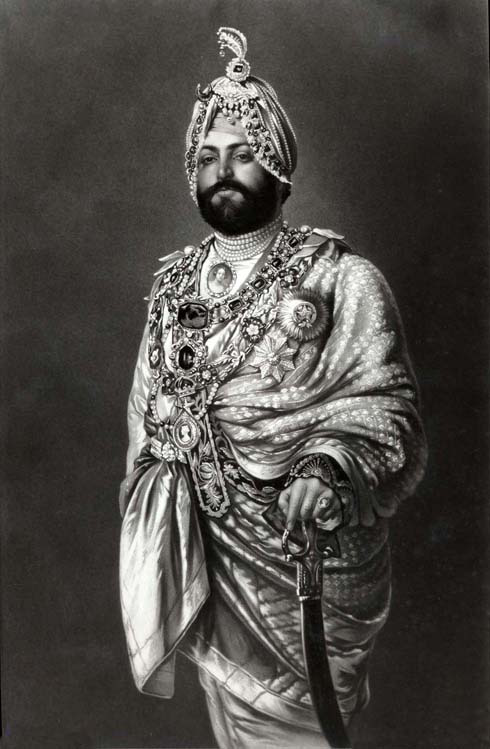
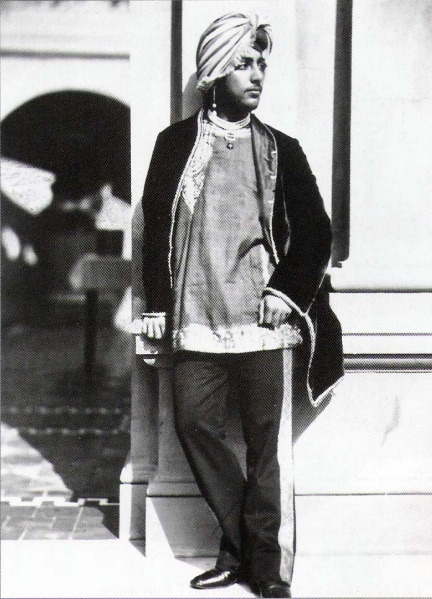
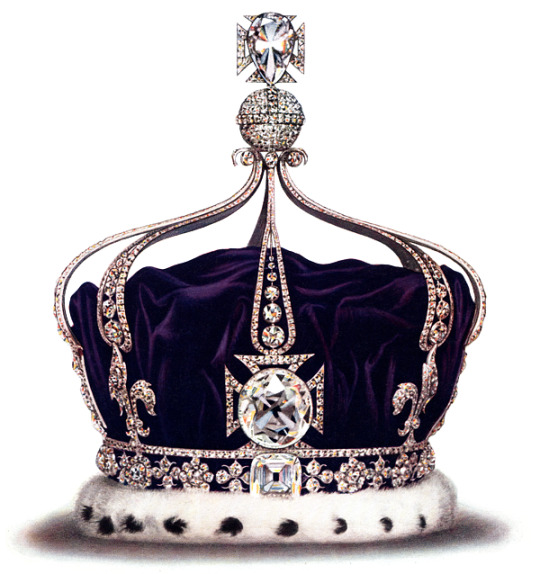
#military history#history#sikh#sikhism#india#british east india company#british imperialism#british empire#19th century#victorian era#ranjit singh#punjab#pakistan#18th century#mughal empire#maratha empire#queen victoria#british india
7 notes
·
View notes
Text
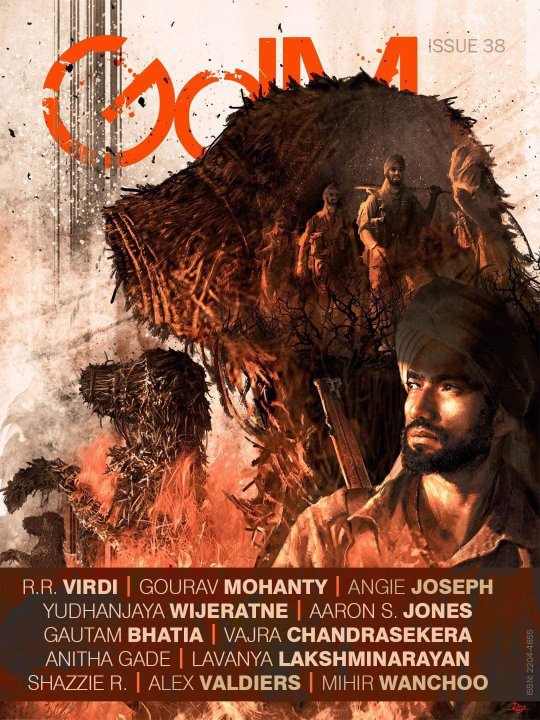
Grimdark Magazine Issue 38 is here!!
This issue deserves so much thanks, most of all to Beth Tabler and Adrian of GDM for making it happen, and personally, I want to thank them for choosing my story as inspiration for the cover and featuring Punjabi Sikhs - which is huge.
For those who don't know, my family background is Sikh, and it's a religious minority that doesn't often feature in fiction, and I've never seen Sikh coded characters on the cover of anything sff in the West personally. In Reed Lions you'll find a band of brothers on the march, Sikh coded by names like: Harpreet, Buppi (nickname for Bulpindher), Many(short for Maninder - a Sikh friend of mine I tuckerized), and others.
The story pays nods to the sacrifice of Sikh soldiers in history and wars - like those used as cannon fodder in Africa and other wars.
At it's core: it's a story of positive masculinity and male brotherhood, duty, sacrifice, PTSD/depression, and the tolls/tragedy of war.
I want thank the members of my discord for all their support and this one is dedicated to them, and to Boe Kelley for the gift of a gaming keyboard I specifically wrote this on.
I'd like to thank Mihir, Shazzie and all the others who've taken time out to read, review, and share this. And of course the deepest thanks as well to the contributors with whom I get to share this lovely TOC and for giving their BRILLIANT stories, which you can get here.
#grimdark#grimdark magazine#punjabi#Sikh#sikhcommunity#sikhheritage#sikh characters#historical war#historical fiction#history#characters of color#people of color#military story#brotherhood#positive masculinity#tragedies#discord server#history in the making#so many people to thank#storytelling#writers and poets#short stories#short story#indian stories#indian history#representation matters#look at this cover#recommended reading#religion#british empire
2 notes
·
View notes
Text
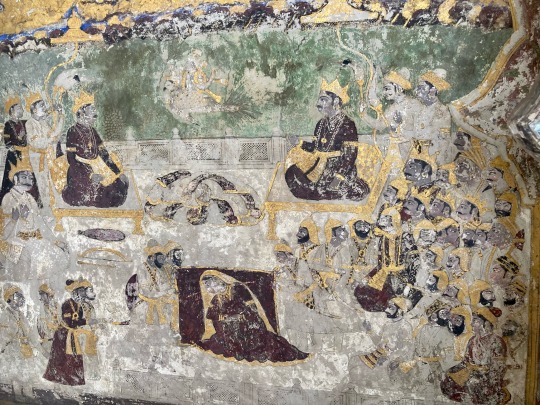
2 notes
·
View notes
Text

To Buy now
visit our website: www.novelemporium.com
Call: 88670 29800
Email: [email protected]
#Sikh Empire Coins#Tripura Coins#Indian Kingdom Coins#Rohilkhand Coins#Bengal Nawabs Coins#Mysore Coins#Maratha Confedaracy Coins#Manipur Coins#Madhurai Kingdom Coins#Lahore Mint Coins#Chhatrapati Shivaji Coins#Chatrapati Sivaji Coins#Nara Narayana Coins#Krishnaraja Wadeyar Coins#Chamaraja Wadeyar Coins#Tanjavur Nayakas Coins#Haider Ali Coins#Tipu Sultan Coins#Shah Alam Coins#Maratha Confedaracy Silver Coins#Maratha Copper Coins#Copper Kasu Coins#Taimur Shah Coins
0 notes
Text
Hari Singh Nalwa Birthday 1st May
Hari Singh Nalwa was a prominent Sikh general and commander during the reign of Maharaja Ranjit Singh of the Sikh Empire. He was born on 1st May 1791 in Gujranwala, Punjab (now in Pakistan) and was the son of Gurdas Singh Uppal.
Hari Singh Nalwa served as the governor of Peshawar and was known for his bravery and leadership qualities. He was instrumental in expanding the Sikh Empire's territory and played a key role in many battles, including the Battle of Multan, Battle of Jamrud, and the Battle of Nowshera.
He also built many forts, including the famous Jamrud Fort, to protect the empire's territories in northern areas. He was considered a fierce warrior and was known to fight in the frontline alongside his soldiers.
Hari Singh Nalwa died in the Battle of Jamrud in 1837, fighting against the Pashtun tribes. His death was a huge loss for the Sikh Empire, and he is still remembered as a legendary figure in the Sikh community. His legacy lives on through the many forts and structures he built and the sacrifices he made for his people.
#Sikh#Khalsa#Khalsa Raj#Sikh Raj#Sikh Empire#Khalsa Empire#Khalistan#Punjab#Panjab#Lahore#Pakistan#Sher e Panjab#sikh raj kive gaya#Maharaja Ranjit Singh#The Black Prince#Kohinoor#Maharani Jind Kaur#Maharani Jind'an#Fall of the Sikh empire#Amritpal singh#dibrugarh#singh#1947#1984#british rule#Hari singh nalwa#maharani chand kaur#Maharaja Duleep Singh#ਸਿੱਖ ਰਾਜ ਕਿਵੇਂ ਗਿਆ?#dhadi
1 note
·
View note
Text








Crowd watching at Darbar Sahib, by Jaskaran Singh
Darbar Sahib, or The Golden Temple is a gurdwara located in Amritsar in the state of Punjab in India. It is one of the holiest pilgrimage sites in Sikhism. The sarovar or the holy pool on the site of the gurdwara was completed by the fourth Sikh Guru, Guru Ram Das, in 1577. The gurdwara was repeatedly rebuilt by the Sikhs after it became a target of persecution and was destroyed several times by the Mughal and invading Afghan armies. Maharaja Ranjit Singh, after founding the Sikh Empire, rebuilt it in marble and copper in 1809. The Golden Temple has a square plan with four entrances, and a circumambulation path around the pool. The complex is a collection of buildings around the sanctum and the pool. The gurudwara houses a community-run kitchen that offers a meal to all visitors without discrimination. Over 150,000 people visit the holy shrine everyday for worship.
#jaskaran singh#darbar sahib#golden temple#amritsar#punjab#india#south asia#sikhism#religion#sikh#south asian#sikh history#portrait photography#street photography#ph#peoplehood#ots
65 notes
·
View notes
Text


Jemadar's Dress Uniform of the 14th Prince of Wales Own Scinde Horse from the British Empire dated to 1937 on display at the National Army Museum in London, England
Much like other cavalry regiments, the Indian army cavalry had colourful dress uniforms as seen here with this Kurta, a long tunic. This one was for a Jemadar, the lowest ranks of Viceroy's Commissioned Officer that an Indian could hold. They could command platoons and cavalry troops themselves or assisted by British officers. The Scinde Horse recruited from the Pathans, Sikhs and Rajputs of the Punjab.
In the build up to the Second World War, the 14th were part of the British Empire's mechanisation and were made part of the 31st Indian Armoured Division in 1940. Initially they used the Indian Pattern Light Tank but were soon updated with American tanks such as the Sherman.
Photographs taken by myself 2024
#military history#art#uniform#fashion#cavalry#india#indian#british empire#20th century#second world war#national army museum#london#barbucomedie
49 notes
·
View notes
Text
Jassa Singh Ramgarhia short article

Jassa Singh Ramgharia, a prominent figure in Sikh history, was a revered Sikh warrior and statesman who played a crucial role in defending Sikh interests and consolidating Sikh power. His leadership, military brilliance, and administrative capabilities made him one of the most respected and influential figures of his time. This article provides an overview of Jassa Singh Ramgharia's life, achievements, and legacy.
Early Life and Rise to Prominence: Jassa Singh Ramgharia was born on 5 May 1723 in the village of Ichogil, Punjab. He belonged to the Ramgharia Misl, named after the fortified fort of Ramghar.
The family of Jassa Singh Ragarhia has been associated with Guru Ghar for generations. On the day of Baisakhi in 1699, when Guru Gobind Singh Ji founded the Khalsa Panth, the first hundred Singhs who were baptized by Dashmesh Pita included Sardar Hardas Singh, the grandfather of Jassa Singh Ramgarhia. They knew carpentry, so they were entrusted with the task of making weapons for the army of Guru Ghar. Bhai Hardas Ji performed this work very well. Bhai Hardas Ji fought many wars with Baba Banda Singh Bahadur after accepting the torch of Guru Gobind Singh Ji and was injured after the widow's war. After the martyrdom of Baba Banda Singh Bahadur, the Sikhs had no main leader until 1716-1733. During that time, Bhai Bhagwan Singh (Jassa Singh's father) came to Icho Gill with his family. Bhai Bhagwan Singh was a fearless soldier and, with 200 followers, entered the royal Mughal army under the governor of Lahore, Khan Bahadur, where he became a renowned officer. Bhai Bhagwan Singh had five sons: Jai Singh, Jassa Singh, Khushal Singh, Mali Singh, and Tara Singh. Jassa Singh was the second son, born in 1723. Sardar Jassa Singh Ji learned armor techniques and Gurmukhi from his father. From a young age, he embraced Sikhism and became a dedicated follower of the Sikh Gurus. Soon, under the leadership of Sardar Gurdayal Singh, Jassa Singh Ji drank Amrit from the Five Beloved Ones. Jassa Singh Ramgarhia Ji was not interested in carpentry work since his childhood, because as he grew older, his desire to work for the Sikh community grew stronger.
1st Battle Against Nader Shah: When news reached Sardar Jassa Singh that Nader Shah intended to loot Iran and come to India, he went to war with his father. He fought bravely in the 1738 war. In this battle, Sardar Jassa Singh's father was martyred, but Zakariya Khan, impressed by his bravery, granted his family a Jagir of five villages near Amritsar and appointed Sardar Jassa Singh as Rasaodar. The names of those villages were: Vallah, Verka, Tung, Sultanwind, and Chaba. Among them, the village of Vallah came to the share of Jassa Singh Ji, marking the beginning of his political journey.
Sikhs Forming Small Groups: The year 1745 holds a special place in Sikh history. After the death of Zakaria Khan on July 1, the Sikh community faced numerous challenges due to his 19-year rule as the governor. His two sons started vying for the throne, leading to internal strife. Despite having golden opportunities, the Sikhs began forming small groups, and Sardar Jassa Singh joined the group led by Sardar Nand Singh Singhania. By the time Zakaria Khan's sons realized it, the Sikhs had already carved out their own space.
Construction of Ramrouni Fort: One day, on the occasion of Baisakhi, all Sikhs gathered together. Sardar Sukha Singh Kalsi and Mani Kamboke urged the Sikhs to build the first fort for their protection, to be named after Guru Ram Dass Ji. The fort was named Ramrouni, near Amritsar, and Guru Ramdas Ji had previously built a well at the site. In 1748, the foundation stone of a sturdy fort was laid around the same well. Within a few days, the fort was completed, with significant contributions from Sardar Jassa Singh and his colleagues.
The Siege at Ramrouni Fort: Ahmad Shah Abdali suffered defeat at the hands of Mir Mannu during a battle. On April 9, 1748, Mir Mannu became the subedar of Lahore and Multan. Anticipating the growing Sikh population, he ordered the killing of Sikhs who sought refuge. They reached Adhikina Begh near Jalandhar, where the subedar was a clever ruler. On Diwali day, a large group of Sikhs gathered at Harminder Sahib. Mir Mannu ordered his subordinate to surround them. 500 Singhs were inside the Ramrouni fort. Witnessing their bravery, their spirit was lifted, and they were ready to fight. Kaura Mall Jau, a hero of Adhin Beg, was consulted by Jassa Singh. With the wisdom of Jassa Singh, the crisis that had befallen the Sikh community was overcome, and the siege was lifted from Ramrouni.
From Jassa Singh to Jassa Singh Ramgharia: Sardar Jassa Singh Ji became a respected figure, known for his readiness to make significant sacrifices for the Panth. The fort of Ramrawani was later renamed Ramgarh, and Sardar Jassa Singh was appointed as its commander. He and his companions became known as Ramgarhia. The responsibility for Ramgarh Fort rested with Jassa Singh Ragarhia, and he continued to develop it over time.
Formation of Dal Khalsa: In response to attacks by Ahmed Shah Abdali, the Sikhs formed the Dal Khalsa. This organization consisted of 65 teams, each with a Jathedar. Over time, these groups transformed into Misals. On March 29, 1749, 12 Misals were formed on the day of Vaisakhi. Among them was the Ramgarhia Misal, led by Jassa Singh Ramgarhia.
Attack on Ramgarhia Fort: Mir Mannu oppressed the Sikhs, leading to many fleeing Lahore and enduring torture and martyrdom. Despite these challenges, the Sikhs persisted. Mir Mannu attacked and demolished the Ramgarhia Fort, but Jassa Singh Ramgarhia managed to escape by breaking through its walls.
Abdali's Attack on Punjab: In 1752, Mir Mannu died, weakening the government. Sardar Jassa Singh Ramgarhia seized this opportunity to rebuild the Ramgarh Fort, thereby deterring potential enemies. In 1767, Ahmad Shah Abdali launched his final attack. Despite initial success, he faced fierce resistance from Jassa Singh Ramgarhia and Jassa Singh Ahluwalia. Abdali's army was eventually defeated, with Jassa Singh Ramgarhia leading the way. His fame spread across India as a result.
Jassa Singh Ramgarhia's Territory Captures: Alongside his brother Jai Singh, Jassa Singh Ramgarhia captured several areas, including Batale and Amritsar. After the death of Adhina Baig in 1758 AD, the Pathans took control, prompting the Sikhs to resist courageously. Jassa Singh Ramgarhia's influence expanded due to his connection with the entire Sikh Panth. They conquered Batala, Kadian Kalanur, Ghuman, Sri Hargobandpur, Dinanagar, and Shahpur Kandi. They soon extended their control over Tanda, Maniwal, Mangowal, Miani, Digalpur, and Rohil. When Sardar Jassa Singh Ji Ramgarhia considered occupying the northern hilly areas, no one else had such thoughts due to the dominance of the hill princely states. These states were significantly advanced during that era. Ghuman Chand, the ruler of a princely state, agreed to pay 4000 rupees to Ghuman Chand in exchange for control over Kot Kangre. Their taxes continued until 1774. This determination paved the way for their authority over other hill kingdoms. Nupur and Chambe rulers also eventually aligned with them. A lasting central state system was established, and Sardar Jassa Singh Ramgarhia expanded his influence across these territories, establishing a permanent central state.
Rivalry between Ahluwalia and Ramgarhia: Given the geographical connection between Ahluwalia, Ramgarhia, and Masala, occasional clashes between these groups were inevitable. This led to tensions between the two factions.
Delhi and Rajputana Provinces: Jassa Singh Ramgarhia's influence extended to the Delhi region. He looted and set fire to the Mughal Palace and acquired four cannons from the Red Fort. His success continued against the Nawabs of Panipat, Karnal, and Meerut, with the collection of ten thousand rupees annually. Gifts and offerings were also received from the rulers of Bharatpur, Dholpur, and Jaipur. A Gupti (sword in a staff) gifted by them, inscribed with the name of Maharaja Jassa Singh Ahluwalia in gold letters, was preserved by the family.
Freeing the Brahmin's Daughters: Jassa Singh Ramgarhia's commitment to opposing violence and oppression was evident when a Brahmin sought his help. The Nawab of Hisar had abducted the Brahmin's two daughters. Jassa Singh attacked the Nawab, rescued the girls, and returned them to their family. Despite some Brahmins expressing concerns about accepting the girls, Jassa Singh ensured their acceptance in society. Sadat Ali Khan, Nawab Hisar's son, provided Rs. 50,000 for the Brahmin's support, and an additional tribute of Rs. 50,000 was paid by the people of Hissar.
Hoisting the Khalsa Flag around Delhi: In 1783, the Sikhs entered Delhi. They captured Mughalpur and amassed an army of 30,000 outside the city walls. Sikhs entered through a hole in the wall and took control of the Red Fort. The Sikhs occupied Delhi for five years, during which they gathered substantial wealth, artillery, and the emblem of the Khalsa Raj. Despite facing challenges, the Sikhs successfully held the throne of Delhi.
Death and Legacy: Jassa Singh Ramgarhia met a tragic end. He was betrayed, captured by the Sukerchakia Misl, and subsequently executed by the Mughal authorities in 1803. Despite his untimely demise, his legacy continued to inspire Sikhs worldwide. His contributions to Sikh history, his military prowess, administrative reforms, and commitment to Sikh principles left an indelible mark. His martyrdom further solidified his legendary status and served as a poignant reminder of the sacrifices made by Sikh leaders for the community's welfare.
Conclusion: Jassa Singh Ramgarhia's life is a testament to his exceptional leadership, military prowess, administrative acumen, and commitment to Sikh values. His legacy remains etched in Sikh history as a beacon of strength, resilience, and unity. His contributions shaped Sikh identity, inspired future generations, and played a significant role in the establishment of the Sikh Empire. His name continues to evoke admiration and respect among Sikhs and beyond, serving as a reminder of the indomitable spirit of the Sikh community.
0 notes
Text
Happy 181st Birthday to Henry Green/ Jayadeep Mir!!!

I have NOT seen enough appreciation for this man, and it is A CRIME. He was born on December 7th, 1843, within the borders of the Sikh Empire to Princess Pyara Kaur and Indian Assassin Arbaaz Mir. He is a certified sweetie bear and all-around great character (FIGHT ME) who acts as not only a patient mentor, but a calm mediator between the two rather hot-headed Frye twins... He is kind and peaceful despite the circumstances of the life he lives, and I admire that he has not become numb/cold blooded as a lot of assassins do to survive the 'lifestyle'(?) or hand that they deal with in life.
#assassins creed#ac: syndicate#henry green#jayadeep mir#19th century#victorian era england#london#amritsar#British Brotherhood#Indian Brotherhood#idon'tcareifsomepeoplethinkthatpeoplecelebratingfictionalbirthdaysisannoying#isthismanaPRINCE??? His mom is a princess...#so sassy!#didn't post bc finals kicked my ass
26 notes
·
View notes
Photo

Second Anglo-Sikh War
The Second Anglo-Sikh War (1848-9) once again saw the British East India Company defeat the Sikh Empire in northern India. The war, which started off as a rebellion against British colonial rule, included the high-casualty Battle of Chillianwala, but the conflict was finally won by the EIC with a decisive victory at the Battle of Gujrat in February 1849.
The EIC & the Sikh Empire
The British East India Company had been grabbing territory since its victories at the 1757 Battle of Plassey and the 1764 Battle of Buxar, which gave the British a vast and regular income in local taxes, besides other riches. The EIC kept on expanding and defeated the southern Kingdom of Mysore in the three Anglo-Mysore Wars (1767-1799) and the Maratha Confederacy of Hindu princes in central and northern India in the three Anglo-Maratha Wars (1775-1819). Next came expansion in the far northeast and more victories in the Anglo-Nepalese War (1814-1815) and the three Anglo-Burmese Wars (1824-1885). The next and final target of the EIC was northwest India and the Punjab, the heartland of the Sikh Empire.
The Punjab, located in the northwest of the Indian subcontinent, is an area which today covers parts of Pakistan and India. The Sikh Empire had risen due to the gradual decline of the Mughal Empire (1526-1857). Sikh territories were divided between 12 misls or armies, each led by a chief who collectively formed a loose confederation. The greatest of Sikh leaders was Ranjit Singh (1780-1839), the 'Lion of Lahore'. He forged the Sikh Empire by modernising the army and conquering Multan and Kashmir (1819), Ladakh (1833), and Peshawar (1834). This expansion rang alarm bells in the offices of the East India Company, especially after their failure in the First Anglo-Afghan War (1838-42) to the north.
In 1839, the Sikhs, Afghans, and British signed a treaty to protect existing borders. Ranjit Singh died in June 1839, and political turmoil weakened the Sikh government's control over its own army. Rajit Singh's youngest son, Duleep Singh (l. 1838-1893), was selected as the new Sikh ruler in 1843, but as he was but a child, his mother, Jind Kaur (aka Rani Jindan, d. 1863), ruled as regent. Jind Kaur supported a military escapade against the British since, even if the Sikhs lost, this would cut the army down to size, perhaps ending the interference of the generals in government affairs and certainly reducing the threat of a military coup.
The EIC exploited the turmoil and conquered the Sindh province (southwest of the Punjab) in 1843. Confident that some of the Sikh misls in the east supported closer ties with the EIC, the British prepared for war in the Punjab and amassed an army of 40,000 men to the southeast of the Sikh state. In the wider world of empires, the British no longer considered the Sikh Empire a useful buffer zone in case of expansion of the Russian Empire into Afghanistan and northern India – the so-called Great Game. The Sikhs would now have to fight the seemingly unstoppable armies of the East India Company.
Continue reading...
20 notes
·
View notes